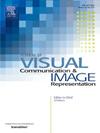Two-tiered Spatio-temporal Feature Extraction for Micro-expression Classification
IF 2.6
4区 计算机科学
Q2 COMPUTER SCIENCE, INFORMATION SYSTEMS
Journal of Visual Communication and Image Representation
Pub Date : 2025-03-12
DOI:10.1016/j.jvcir.2025.104436
引用次数: 0
Abstract
This paper proposed a framework called DAuLiLSTM (DAuVi + LiLSTM) for Micro-expression (ME) classification. It extracts spatio-temporal (ST) features through two novel components: dynamic image of augmented video (DAuVi) and Lightnet with LSTM (LiLSTM). The first component presents a unique strategy to generate multiple dynamic images of each original ME video that contain the relevant ST features. It proposes an algorithm that works as a sliding window and ensures the incorporation of the apex frame in each dynamic image. The second component further processes those images to extract additional ST features. The LiLSTM consists of two deep networks: Lightnet and LSTM. The Lightnet extracts the spatial information and LSTM learns the temporal sequences. A combination of both components extracts ST features sequentially twice and ensures that the model captures all ST features. We found that our model outperforms 14 state-of-the-art techniques in accuracy and F1-score on three ME datasets.
面向微表情分类的双层时空特征提取
本文提出了一种微表情分类框架DAuLiLSTM (DAuVi + LiLSTM)。它通过增强视频的动态图像(DAuVi)和带LSTM的Lightnet (LiLSTM)两种新组件提取时空特征。第一个组件提出了一种独特的策略来生成包含相关ST特征的每个原始ME视频的多个动态图像。提出了一种像滑动窗口一样的算法,保证每个动态图像中都包含顶点帧。第二个组件进一步处理这些图像以提取额外的ST特征。LSTM由两个深度网络组成:Lightnet和LSTM。Lightnet提取空间信息,LSTM学习时间序列。这两个组件的组合按顺序提取两次ST特征,并确保模型捕获所有ST特征。我们发现我们的模型在三个ME数据集的准确性和f1得分方面优于14种最先进的技术。
本文章由计算机程序翻译,如有差异,请以英文原文为准。
求助全文
约1分钟内获得全文
求助全文
来源期刊

Journal of Visual Communication and Image Representation
工程技术-计算机:软件工程
CiteScore
5.40
自引率
11.50%
发文量
188
审稿时长
9.9 months
期刊介绍:
The Journal of Visual Communication and Image Representation publishes papers on state-of-the-art visual communication and image representation, with emphasis on novel technologies and theoretical work in this multidisciplinary area of pure and applied research. The field of visual communication and image representation is considered in its broadest sense and covers both digital and analog aspects as well as processing and communication in biological visual systems.
 求助内容:
求助内容: 应助结果提醒方式:
应助结果提醒方式:


